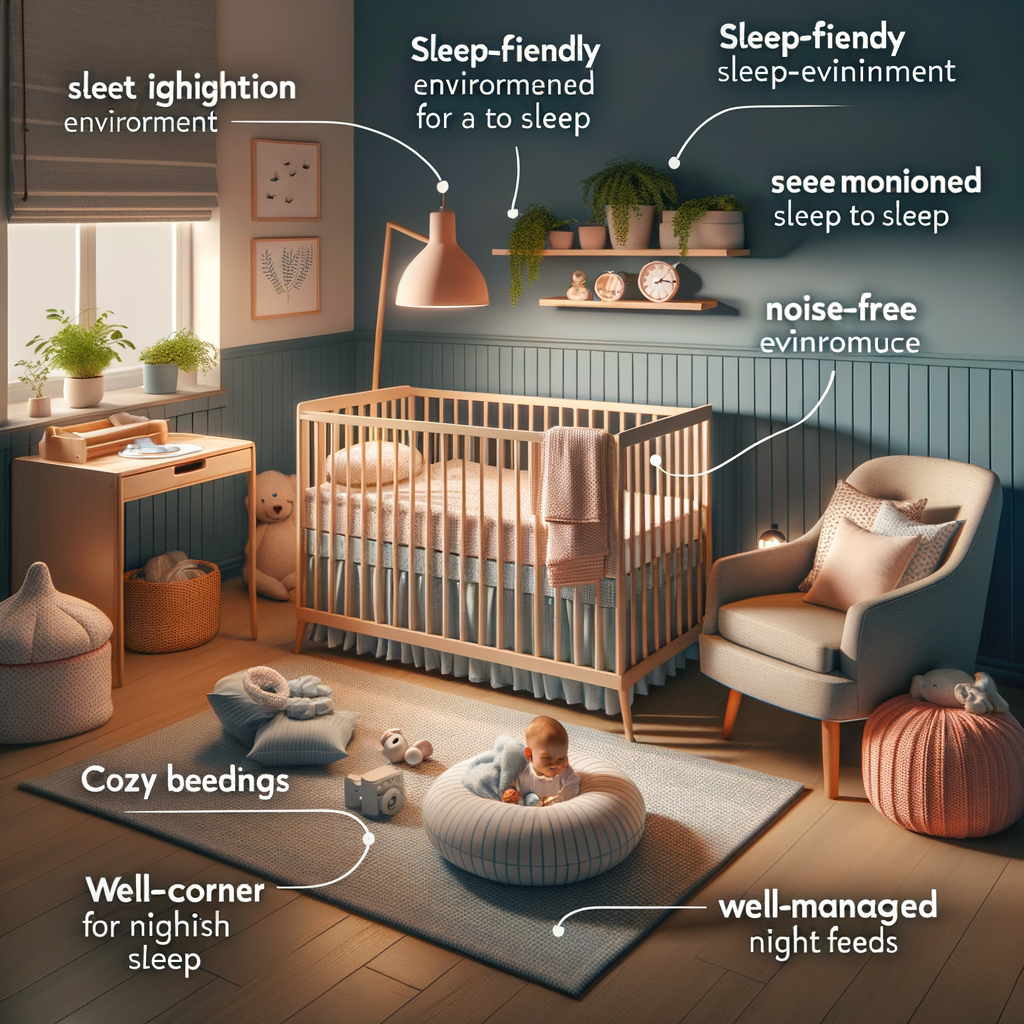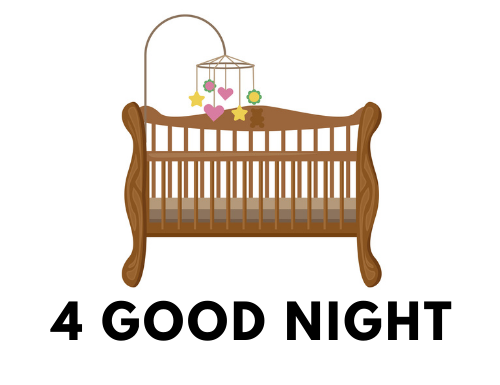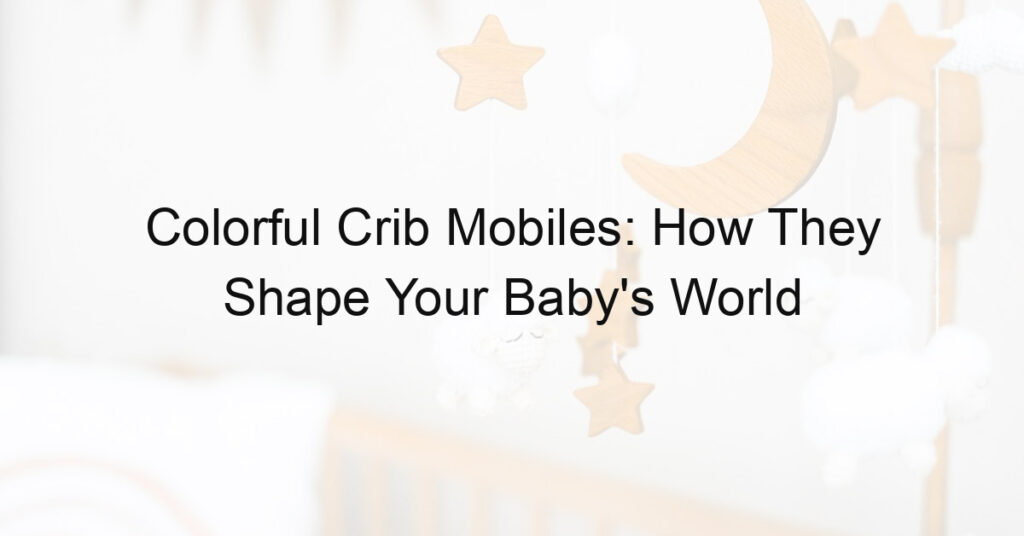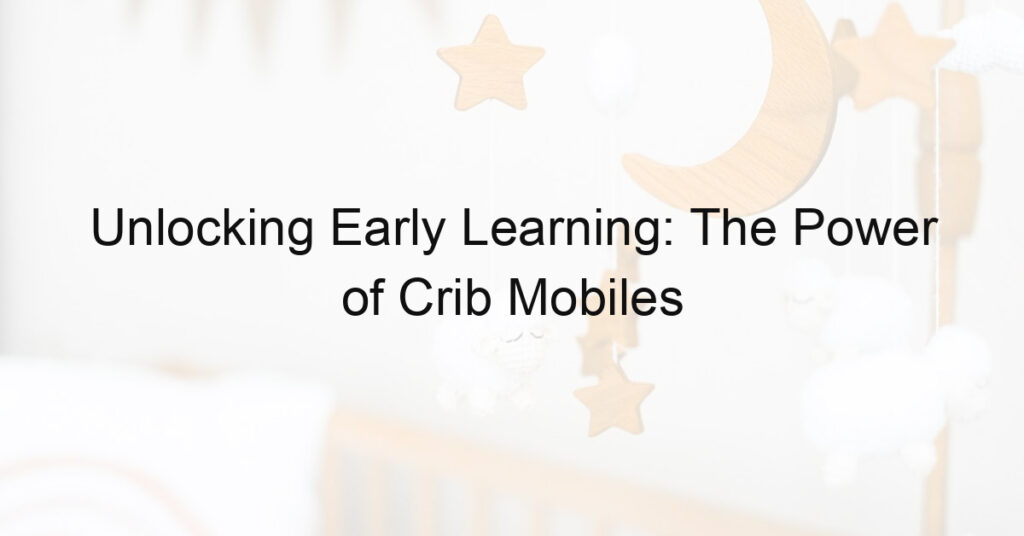
New Mom’s Guide to Creating a Baby Nursery
Welcoming a new baby into your home is an exciting time filled with joy and anticipation. One of the most important tasks during this period is preparing the baby’s nursery. This guide will help new moms understand the importance of a sleep-friendly nursery, plan the nursery setup, and consider key factors in designing a baby room.
-
Understanding the Importance of a Sleep-Friendly Nursery
Creating a sleep-friendly nursery is crucial for your baby’s development. According to research, babies need up to 16 hours of sleep a day during their first year. A well-designed nursery can help promote better sleep patterns, ensuring your baby gets the rest they need. A sleep-friendly nursery should be quiet, dark, and cool. Consider using blackout curtains, a white noise machine, and maintaining a temperature of around 68-72°F (20-22°C).
-
Planning the Nursery Setup for New Moms
Planning the nursery setup can seem overwhelming, but it doesn’t have to be. Start by choosing a theme or color scheme. This will guide your decisions on furniture, decorations, and bedding. Next, consider the layout. The crib should be placed away from windows and heaters, and the changing table and storage for diapers and clothes should be within easy reach. Don’t forget to include a comfortable chair for feeding and rocking your baby to sleep.
-
Key Considerations for Designing a Baby Room
When designing a baby room, safety should be your top priority. Ensure all furniture is sturdy and secure, and avoid decorations with small parts that a baby could choke on. Choose a crib with slats no more than 2 3/8 inches apart, and use a firm mattress with a tight-fitting sheet. Keep the crib free of pillows, blankets, and stuffed animals to reduce the risk of suffocation. Lastly, consider the room’s lighting. A dimmer switch can be useful for late-night feedings and diaper changes, allowing you to see without fully waking your baby.
Creating a baby nursery is a labor of love, and with careful planning and consideration, you can create a space that is safe, comfortable, and perfect for your new arrival. Remember, the most important thing is that your baby feels loved and secure in their new room.
Nursery Design for Sleep: Essential Elements
When designing a nursery for your little one, it’s important to consider elements that promote restful sleep. One of the key factors in this is the color scheme of the room. Let’s explore this in more detail.
Choosing the Right Colors
Color choice plays a significant role in creating a sleep-inducing environment for your baby. The psychology of colors and their impact on a baby’s sleep environment is a fascinating topic. Let’s delve into it.
- The psychology of colors in a baby’s sleep environment: Colors can evoke different emotions and reactions. For instance, bright, vibrant colors like red and orange can stimulate activity and excitement, which may not be ideal for a sleep environment. On the other hand, cool colors like blue and green are often associated with calmness and relaxation, which can promote sleep.
- Best color choices for a sleep-inducing nursery: Based on the psychological effects of colors, the best choices for a sleep-inducing nursery would be shades of blue, green, and even certain neutrals like gray and beige. These colors are known to have a calming effect, which can help your baby relax and fall asleep more easily.
Remember, the goal is to create a peaceful and soothing environment that encourages sleep. So, when choosing colors for your baby’s nursery, think about the kind of atmosphere you want to create. A sleep-friendly color scheme can make a big difference in your baby’s sleep patterns and overall well-being.
Lighting and its Impact on Baby’s Sleep
Lighting plays a crucial role in creating a sleep-friendly environment for your baby. Both natural and artificial light can significantly affect your newborn’s sleep patterns and overall sleep quality. Let’s delve into the details.
- The role of natural and artificial light in sleep optimization for newborns
- Choosing the right window treatments for a sleep-friendly nursery
Natural light, especially morning sunlight, can help set your baby’s internal clock, also known as the circadian rhythm. This rhythm influences sleep-wake cycles, feeding habits, and other physiological processes. Exposure to natural light during the day can help your baby differentiate between day and night, promoting longer and more restful sleep at night.
On the other hand, artificial light, particularly blue light emitted by electronic devices, can disrupt your baby’s sleep. It’s advisable to limit your baby’s exposure to artificial light, especially close to bedtime, to ensure a good night’s sleep.
Window treatments are an essential element in controlling the amount of light entering your baby’s nursery. Blackout curtains or blinds can be a great choice to ensure the room is dark enough for your baby to sleep, especially during daytime naps or summer evenings when the sun sets late. However, during the day, allow as much natural light as possible to enter the room to help set your baby’s circadian rhythm.
In conclusion, understanding the impact of light on your baby’s sleep and making thoughtful choices can significantly improve your newborn’s sleep quality. Remember, a well-rested baby is a happy baby!
Furniture Selection and Placement
When designing your baby’s nursery, the choice and arrangement of furniture play a significant role in creating a sleep-friendly environment. Let’s explore these two crucial aspects.
- Choosing Safe and Comfortable Furniture
Choosing the right furniture for your baby’s nursery is not just about style and aesthetics. Safety and comfort should be your top priorities. Here are some tips to help you make the right choice:
- Crib: This is where your baby will spend most of their time. Ensure it meets safety standards. The slats should be close enough to prevent your baby’s head from slipping through. The mattress should fit snugly within the crib, leaving no gaps.
- Changing Table: Opt for a sturdy changing table with guardrails and a safety strap to keep your baby secure. It should be at a comfortable height for you to prevent back strain.
- Rocking Chair: A comfortable rocking chair can soothe your baby to sleep. Ensure it has a strong, stable base and comfortable cushions.
- Optimal Furniture Placement for a Peaceful Sleep Environment
The way you arrange the furniture in your baby’s nursery can also impact their sleep. Here are some guidelines for optimal furniture placement:
- Crib Placement: Position the crib away from windows to avoid drafts and noise that could disturb your baby’s sleep. It should also be away from any cords or drapes that could pose a safety risk.
- Changing Table: Place the changing table close to the crib for easy access during night-time diaper changes. However, ensure it’s not within your baby’s reach from the crib.
- Rocking Chair: Position the rocking chair in a cozy corner where you can comfortably feed and soothe your baby to sleep.
Remember, the key is to create a safe, comfortable, and peaceful environment that promotes sleep. With the right furniture and optimal placement, you can achieve just that.
Sleep-Friendly Nursery Tips: Creating the Perfect Atmosphere
Creating a sleep-friendly nursery is all about setting the right atmosphere. This involves paying attention to factors such as sound and temperature control. Let’s dive into these aspects in more detail.
Sound and Temperature Control
Sound and temperature are two key factors that can significantly influence your baby’s sleep quality. Ensuring the right balance of these elements can help create a soothing and comfortable environment for your little one.
- Using white noise machines for a soothing sleep environment
- Maintaining the right temperature for baby’s sleep
White noise machines can be a great addition to your nursery. They produce a consistent, soothing sound that can mask other noises and help your baby fall asleep more easily. The sound of white noise is similar to the sounds babies hear in the womb, which makes it comforting and familiar to them. It’s like a lullaby that gently lulls your baby to sleep.
Temperature control is another crucial aspect of creating a sleep-friendly nursery. Babies can’t regulate their body temperature as well as adults can, so it’s important to keep the nursery at a comfortable temperature. The ideal nursery temperature is between 68 and 72 degrees Fahrenheit. This range provides a comfortable and safe environment for your baby to sleep in. It’s also a good idea to use a room thermometer to keep track of the temperature.
Remember, every baby is unique and what works for one might not work for another. It’s all about finding what helps your baby sleep best. By paying attention to sound and temperature control, you can create a sleep-friendly nursery that encourages healthy sleep habits for your little one.
Creating a Stimulus-Free Zone
Creating a nursery that promotes good sleep habits is crucial for your baby’s development. One of the most effective ways to do this is by creating a stimulus-free zone. This involves two main steps:
- Keeping distractions to a minimum
- The importance of a clutter-free nursery
Keeping Distractions to a Minimum
Distractions can come in many forms, from bright colors and loud toys to the hustle and bustle of household activities. By keeping these distractions to a minimum, you can help your baby focus on sleep when it’s time to rest.
Consider using soft, neutral colors for the nursery walls and decor. Avoid placing toys or mobiles that make noise near the crib. Also, try to keep the nursery door closed during nap time and bedtime to block out household noises.
The Importance of a Clutter-Free Nursery
A clutter-free nursery is not only safer for your baby, but it also promotes better sleep. Clutter can be visually stimulating, which can make it harder for your baby to wind down and fall asleep.
Keep the nursery tidy by having a place for everything. Use shelves, baskets, and bins to organize toys, books, and baby supplies. Make it a habit to put things away after use. This will help maintain a calm, peaceful environment that is conducive to sleep.
In conclusion, creating a stimulus-free zone in your baby’s nursery can significantly improve their sleep quality. By keeping distractions to a minimum and maintaining a clutter-free space, you can help your baby develop healthy sleep habits that will benefit them for years to come.
Baby Sleep Guide: Routine and Sleep Training
Getting your baby to sleep through the night is a common challenge for many new parents. It’s essential to establish a sleep routine and understand various sleep training methods. This guide will provide you with practical tips and techniques to help your baby sleep better.
-
Establishing a Sleep Routine for Your Baby
Creating a consistent sleep routine for your baby can be a game-changer. It provides a sense of security and helps regulate your baby’s internal clock. Here are some steps to establish a sleep routine:
- Set a consistent bedtime: Choose a bedtime and stick to it every night. This helps your baby understand when it’s time to sleep.
- Create a soothing pre-sleep routine: This could include a warm bath, a bedtime story, or a lullaby. These activities signal to your baby that it’s time to wind down and sleep.
- Ensure the sleep environment is comfortable: Make sure the room is dark, quiet, and at a comfortable temperature. A good sleep environment can significantly improve your baby’s sleep quality.
-
Understanding and Implementing Sleep Training Methods
Sleep training is a process that helps your baby learn to fall asleep on their own. There are several methods you can choose from, depending on what works best for your family. Here are a few popular ones:
- The Ferber Method: This method involves letting your baby cry for a set amount of time before offering comfort. The time increases gradually each night.
- The Chair Method: In this method, you sit in a chair next to your baby’s crib until they fall asleep. Each night, you move the chair further away until you’re out of the room.
- The Fading Method: This method involves reducing your involvement in your baby’s sleep routine gradually. For example, if you usually rock your baby to sleep, you might rock less each night until you’re no longer rocking at all.
Remember, every baby is unique, and what works for one might not work for another. It’s essential to be patient and flexible when implementing these methods.
In conclusion, establishing a sleep routine and understanding sleep training methods can significantly improve your baby’s sleep. Remember, consistency is key, and it’s okay to adjust the methods to suit your baby’s needs. Happy parenting!
Case Studies: Successful Nursery Setups for New Moms
Let’s take a look at some real-life examples of nursery designs that have proven successful for new moms. These case studies will provide you with practical insights and ideas for setting up your own baby’s nursery.
- Case Study 1: A minimalist, sleep-friendly nursery design
- Case Study 2: A nursery design that grows with the baby
Meet Sarah, a new mom who decided to keep her nursery design simple and minimalist. She focused on creating a serene and sleep-friendly environment for her baby. Her nursery features a neutral color palette with shades of white and gray, which are known to have a calming effect. The room is free of clutter, with only essential furniture items like a crib, a changing table, and a comfortable chair for feeding. The lighting is soft and dimmable, perfect for nighttime feedings and diaper changes. Sarah also invested in a white noise machine to help her baby sleep better. The result? Her baby started sleeping through the night at just 8 weeks old.
Next, we have Laura, who wanted a nursery that could grow with her baby. She opted for a convertible crib that can be transformed into a toddler bed and later a full-sized bed. The room’s color scheme is a mix of pastels and bright colors, stimulating yet soothing. Laura also chose furniture with plenty of storage for baby items, and she plans to replace these with age-appropriate bookshelves and toy storage as her child grows. She also hung artwork that can be easily swapped out for more mature pieces over time. Laura’s nursery design is not only practical but also cost-effective, as it reduces the need for major changes as her child grows.
These case studies show that with careful planning and thoughtful design, you can create a nursery that meets your baby’s needs and grows with them. Whether you prefer a minimalist, sleep-friendly design or a nursery that evolves with your child’s growth, the key is to focus on creating a safe, comfortable, and stimulating environment for your little one.
Key Takeaways: Designing the Perfect Sleep-Inducing Nursery
As we conclude this comprehensive guide, let’s summarize the key points to remember when creating a sleep-inducing nursery for your baby. These insights are crucial for new moms who want to ensure their baby gets the best sleep possible.
- Understanding your baby’s sleep needs
- Creating a sleep-friendly environment
- Implementing a consistent sleep routine
Every baby is unique, and so are their sleep needs. Most newborns sleep for about 16 to 17 hours a day, but this can vary. As your baby grows, their sleep patterns will change. It’s essential to understand these changes and adapt accordingly. Remember, a well-rested baby is a happy baby.
A sleep-friendly environment is crucial for your baby’s sleep. This includes a quiet, dark room with a comfortable temperature. Consider using a white noise machine to drown out any disruptive noises. Also, a good quality crib and mattress are vital for your baby’s comfort and safety.
Consistency is key when it comes to your baby’s sleep. Establishing a regular sleep routine can help your baby understand when it’s time to sleep. This routine could include a warm bath, a bedtime story, and a lullaby. Stick to this routine as much as possible, even on weekends.
In conclusion, designing a sleep-inducing nursery involves understanding your baby’s sleep needs, creating a sleep-friendly environment, and implementing a consistent sleep routine. By following these key takeaways, you can help your baby get the rest they need for healthy growth and development.
| Key Takeaways | Description |
|---|---|
| Understanding your baby’s sleep needs | Recognize the unique sleep patterns and needs of your baby and adapt accordingly. |
| Creating a sleep-friendly environment | Ensure the nursery is quiet, dark, and at a comfortable temperature. Invest in a good quality crib and mattress. |
| Implementing a consistent sleep routine | Establish and stick to a regular sleep routine to help your baby understand when it’s time to sleep. |














